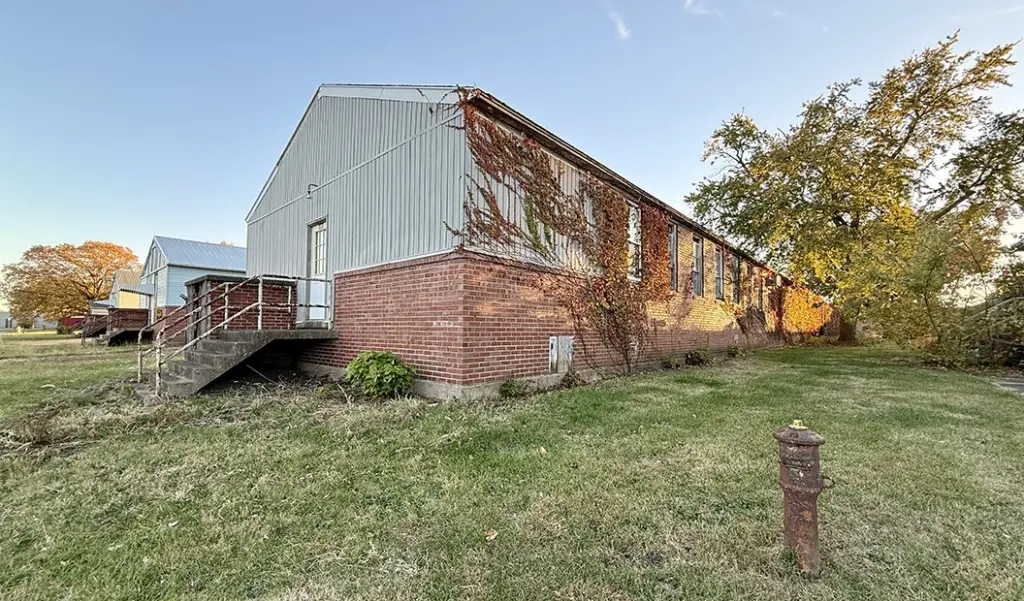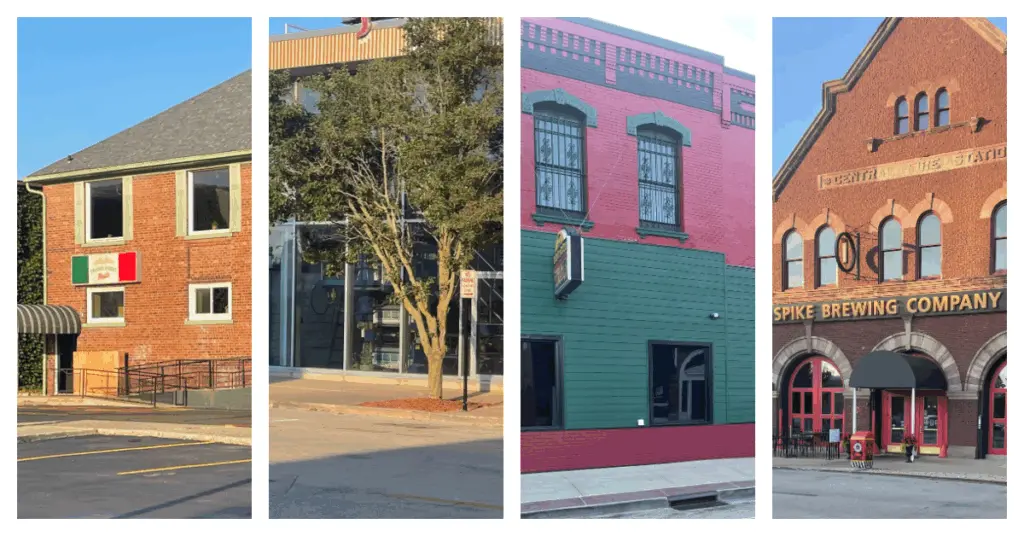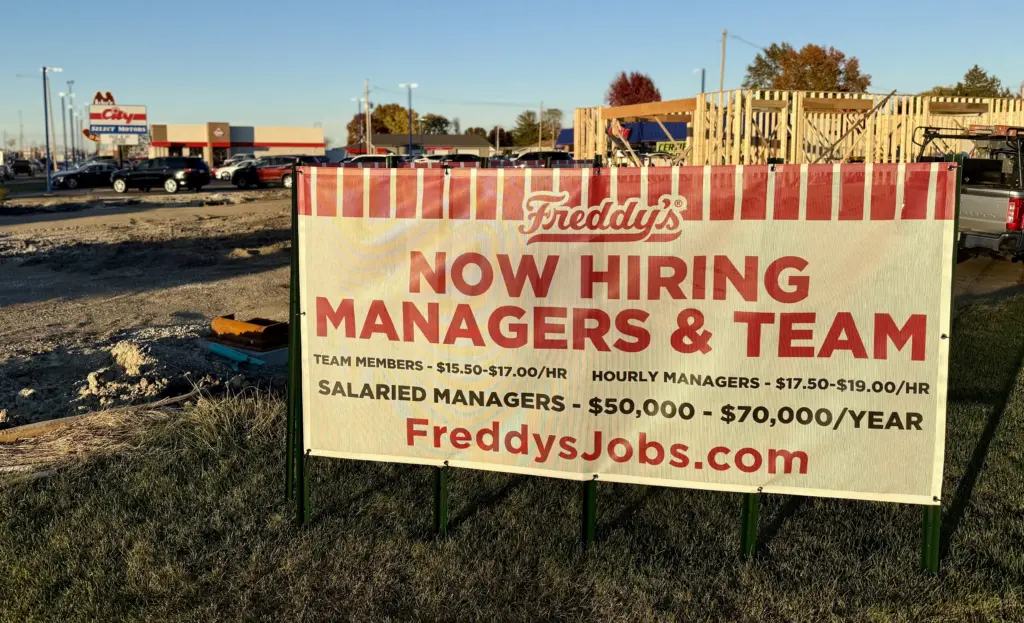Housing Study Finds
• Only 9.5% of homes in Galesburg were built since 1990, compared to 26.2% statewide and 36.5% nationally.
• 50% of vacant housing units in Galesburg were constructed before 1940, reflecting the need for modernization.
• There have been no additions to the multifamily housing market in the past 20 years, highlighting a significant gap in supply.
• The study indicates a pressing need for more affordable rental units, particularly for extremely low and very low-income households.
Now that a study shows the scope of a housing shortage in Galesburg, officials are starting the arduous task of developing a strategy of how to help put a dent into the issue.
Representatives from Novogradac & Company LLP, the national certified public accounting and consulting organization tasked with conducting the comprehensive housing study for the city, presented their findings during Monday’s City Council meeting.
The 242-page report (see below) will be utilized to guide local governmental and agency stakeholders but also to educate and motivate the development community about where the real housing needs/gaps are and determine how to fill the voids.
Addressing housing gaps in Galesburg: New study reveals shortcomings, suggests solutions
Galesburg City Manager Eric Hanson, speaking on the WGIL Galesburg’s Morning News program, said, “Housing is absolutely the single greatest challenge we have going for us. If you don’t have housing across the spectrum, from single family to multi-family in various price ranges, it’s very difficult to expand your economy.”
The executive summary of the report says:
This study is intended to inform community leaders and stakeholders as to the current demographic, economic, and housing market conditions in Galesburg and to identify housing gaps, needs, and barriers to better enable community leaders to make decisions about how to maximize the return on their investment as it relates to housing programs and resources in the community.
The report includes area, demographic and economic trends; existing and future housing conditions, including a supply and demand analysis; capped by a summary of key conclusions.
Ken Springer, president of Knox County Area Partnership for Economic Development, said his organization undertook strategic planning earlier in 2024 and its leadership identified housing an issue to be included in its new work plan.
“KCAP’s staff and leadership are currently in the process of deciding what specific role our organization will play in terms of housing,” Springer said.” Housing is a new area for KCAP – prior to the creation of our new strategic plan, we did not have any involvement with housing in the area.”
“Housing is absolutely the single greatest challenge we have going for us.” — Eric Hanson, Galesburg city manager
Springer said housing is a big issue for communities all around the country.
“Housing impacts growth and it is intrinsically linked to the issue of workforce,” he said. “This study gives us a comprehensive look at the local housing market and the issues facing specific housing sub-markets. The data contained in the study will be very valuable for planning future initiatives.”
Springer believes the comprehensive housing study details the specific issues facing each segment of the local housing market.
“It underlines how complex the housing market is and as a result, there isn’t any singular solution able to address the multiple distinct issues within our housing market,” Springer said. “But with that said, I think the authors of the study did a good job laying out a variety of courses of action that can be considered.”
Like KCAP, Galesburg Mayor Peter Schwartzman said housing has been identified as a high priority area of focus in the city’s strategic plan.
“The city is going to make major investments in housing over the next couple of years,” Schwartzman said. “The information in the housing study will be extremely valuable to us as we make these monetary investments.”
Galesburg’s aging homes
Just 9.5% of homes in Galesburg were built since 1990, compared to 26.2% in Illinois, and 36.5% in the USA.
According to the study, 50% of all vacant housing units in Galesburg were built before 1940.
And there have been no additions to the multifamily housing market in the past 20 years, and only one new subdivision — that on far north Lincoln Park Drive near Lincoln Park.
Based on the study’s analysis there is demand for new housing, both rental and owner, in Galesburg, but the extent of the demand will depend on the location, design, price points and target market.
“Obviously, we have an aging housing stock here,” Hanson said. “We haven’t built a lot of houses in the 20 years — actually, hardly any. I often get asked, ‘where’s the jobs?’ But you also have to have the houses.
“In the past, housing was done by a private owner and a private building — there wasn’t a whole other of city involvement. But more and more across the country, we’re seeing it takes some government participation to get those projects to the finish line.
“Builders left the area when the downturn in the economy started here. If you think about some of the signature builders there were here going all the way back to the 50s, they don’t exist anymore. So now we have to ask where we can find carpenters and builders and finishers and all the things that go into building a home.”
The study noted there are more housing units than households in Galesburg, but many are not available for occupancy due to age/condition or other reasons. And vacancy in rental and sale market has decreased in recent years.
Thus, according to the study, there appears to be a housing shortage for units available for occupancy, both rental and sale.
There also appears to be a need for more available affordable rental units, according to the study, particularly for extremely low and very low income households.
Mayor urges aggressive approach
Schwartzman said the city’s housing challenges “are for real,” but believes there are a variety of ways to address them.
“Our lowest income residents are having the hardest time finding affordable housing,” Schwartzman said. “This is driven by a lack of sufficient quality rental properties. At the same time, much of our old housing stock is in need of maintenance.
“In addition, there are opportunities to support the building of new homes which will draw more higher income residents to live in Galesburg, rather than outside the city or in more affluent cities in the region.
“These various challenges require a multi-pronged approach, as all need to be addressed and can be done simultaneously, if we are aggressive with our efforts. Fortunately, the city is in good financial standing and this will enable us to make the proper investments as well as receive outside grants to assist.
“I am looking forward to this build/rebuild of Galesburg’s housing stock.”
The study also sought input from more than 30 local stakeholders to gain additional insight into current housing issues, needs, barriers, and potential solutions in Galesburg.
Recommendations focused on the types of housing needed (downtown upper story residential, new construction, renovated units, higher density) as well as suggested mechanisms (incentives in the form of grants, public-private partnerships, and/or property tax relief, information, and a positive counter marketing/community vision campaign).
Strategies? Survey says …
In terms of potential strategies, the study recommends starting with a positive marketing campaign to counter the prevailing negative stigmas reportedly associated with the city’s assets and infrastructure.
The recommendation went on to say:
Spotlight the city’s rich cultural history and small city charm, as well as its strategic location along the railroads, and proximity and access to multiple major metropolitan centers including Chicago, but also demonstrate that the city is investing in itself by highlighting, for example, recent investments in the public schools, broadband availability, downtown revitalization efforts and recent housing repair grants. Creating a positive, cohesive vision for the city that is well publicized/marketed coupled with additional investments and actions to meet identified housing gaps, should help the city to retain existing residents as well as attract new residents including some who are currently employed in the city but were forced to look outside the city limits to find housing that suited their needs/preferences.
“As the housing study points out, we have needs in all areas,” Hanson said. “We don’t have the capacity to chase all of those things at one time, but the study will help focus our energy on where we want to go first.”
Comprehensive Housing Study for Galesburg by WGIL Radio on Scribd








